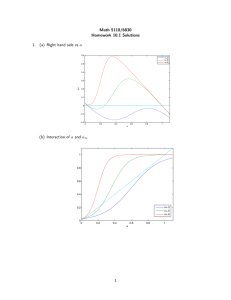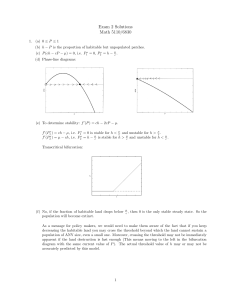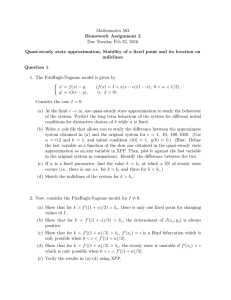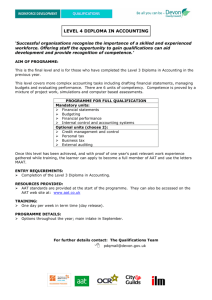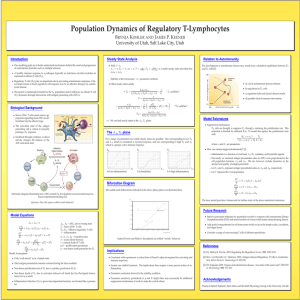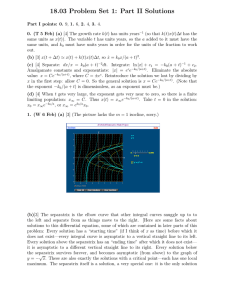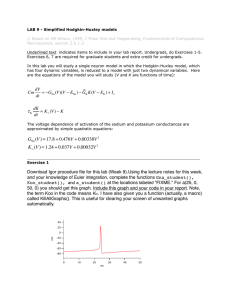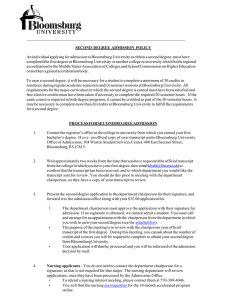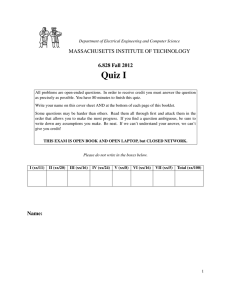Regulatory T Cells Brynja Kohler IMA New Directions Short Course
advertisement
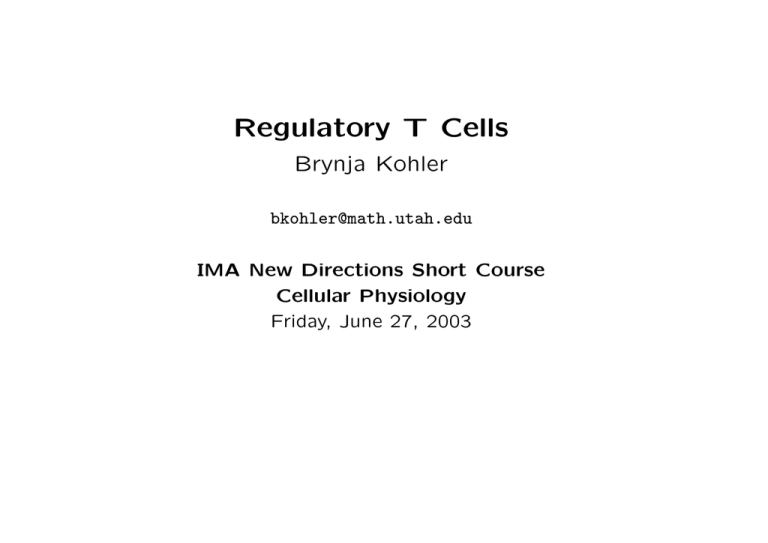
Regulatory T Cells Brynja Kohler bkohler@math.utah.edu IMA New Directions Short Course Cellular Physiology Friday, June 27, 2003 • The Immune System • Multiple Sclerosis • Regulatory Mechanisms • Mathematical Model Identify and Destroy anything doing damage to tissues in the body. • Innate: evolutionary time complement, macrophages, neutrophils, NKcells • Adaptive: ontogenic time lymphocytes (B cells and T cells), antibodies Diverse and Specific through specialized transmembrane protein receptors. Multiple Sclerosis epidemiological data diagnosis MS hypothesis: A trigger early in life in genetically susceptible individuals... Powrie and Maloy, Science, March 2003. Question: Can we see switch behavior in this system? AA + AR = 1 dAA = IAR + k1TE AR − k2TR AA dt dT = −kE AAT − kR AR T + σ − δT dt 2 pTE dTE 2 − δT = kE AAT + − µTE E dt K + TE dTR = kR AR T − δTR dt Steady State Analysis • With I = 0, kR σ σ , T = AA = 0, TE = 0, AR = 1, T = δ+k is a stable steady state R δ(δ+kR ) 2 provided that k2kR > k1kE • Other steady states satisfy k2kR σAA I → TE = − k1δ(kE AA + kR (1 − AA) + δ) k1 “AA nullcline” σ T = kE AA + kR (1 − AA) + δ → 2 pTE 1 σAA 2 + δT = − + µTE E kE AA + kR (1 − AA) + δ kE K + TE TR = kR σ(1 − AA) δ(kE AA + kR (1 − AA) + δ) ! “TE nullcline” The AA - TE plane: I=0 I=2 I=3 Indeed Powrie and Maloy’s description can exhibit “switch” behavior. So what? • Biological Interpretations – Suggests experiments to find I ∗ → Freud’s adjuvant. – System can exhibit hysteresis. – Parameter constraints in the stability condition. – Sensitivity to p and K → there may be additional mechanisms at work to make the switch robust. • Relation to MS – Suggests the “latitude” data may be due to lack of TR . – Requires more to obtain a relapsing remitting disease course. Thanks to ... • James P Keener • Robert Fujinami • Fred Adler • Frank Lynch • Math Physiology Group at University of Utah
